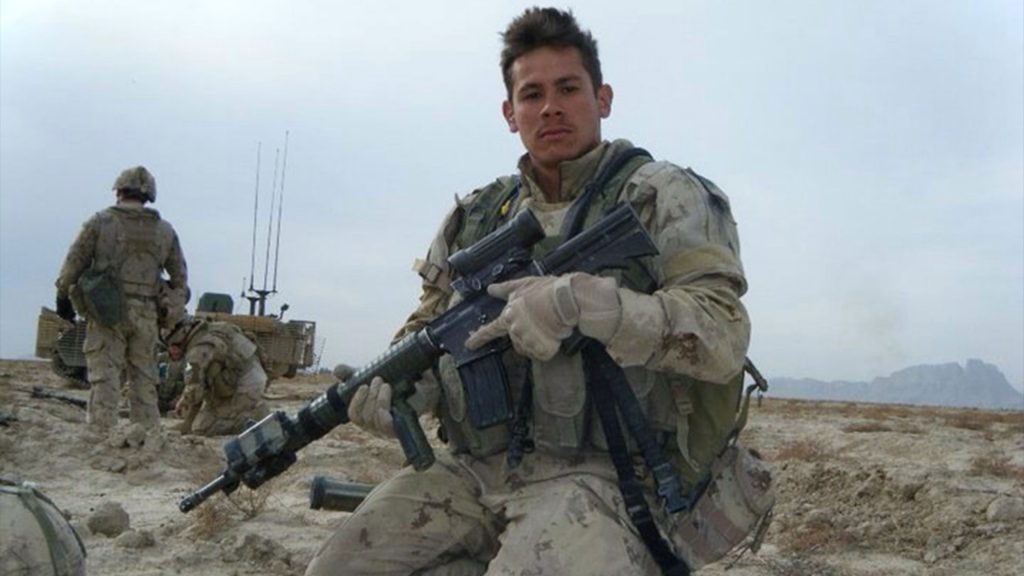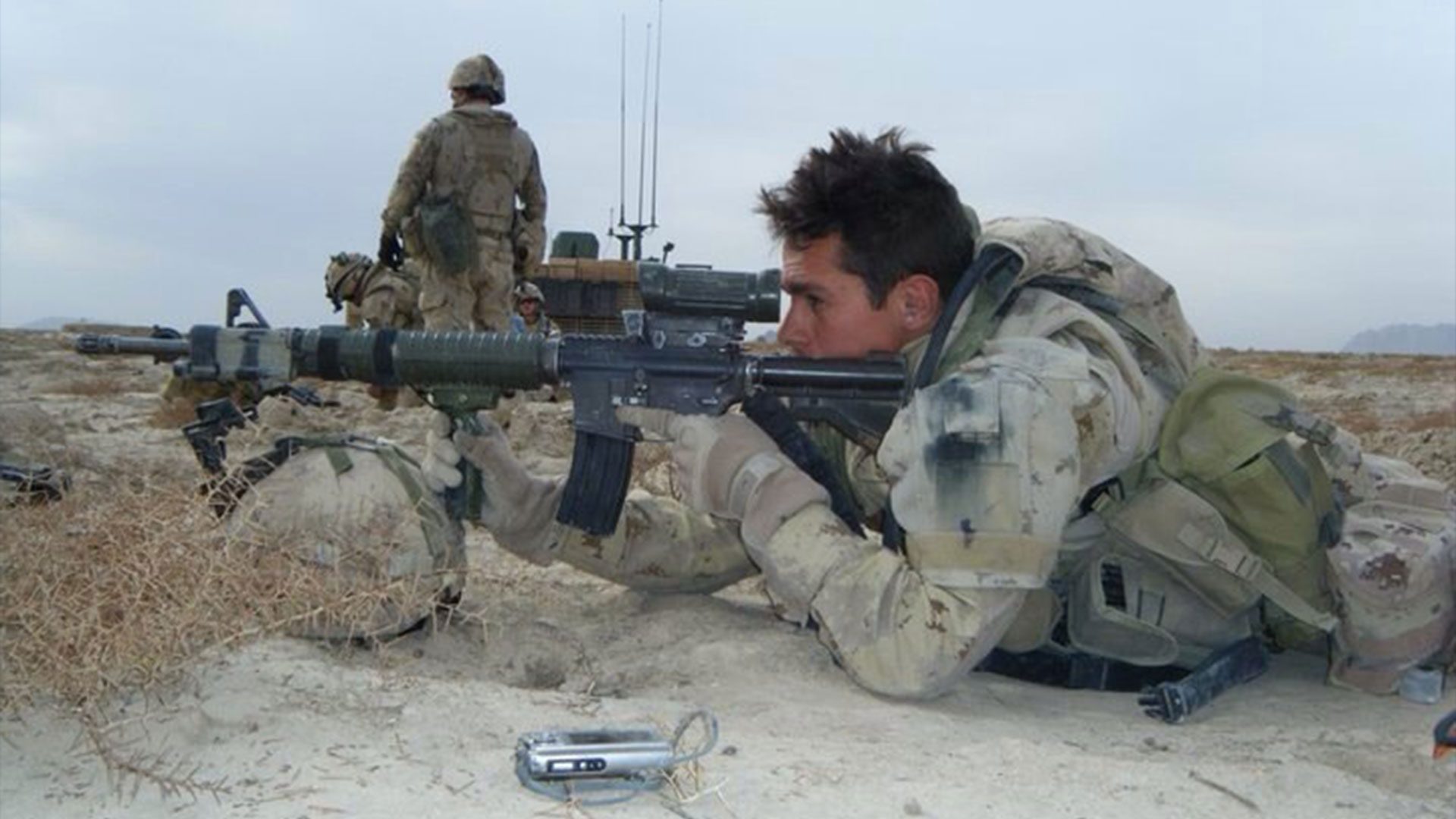
Travis Anderson from Mistawasis First Nation in Afghanistan in 2009. Photo: supplied
Travis Anderson joined the military as soon as he was old enough. He and his father are both members of Mistawasis First Nation in Saskatchewan, but Anderson grew up in Alberta.
From a young age he knew he wanted to join the military.
“My parents wouldn’t sign the papers for me when I was 17. They wanted me to wait and think about it,” says the 35-year-old Anderson.
“I have an older brother who is still currently in [the military]. He has been in it for 21 years. He was kind of my icebreaker for me to join.
“When I first got in [to military service] there wasn’t very many of us. Maybe one or two out of 20 or 30 guys,” says Anderson about only having a few other Indigenous veterans in his basic training group.
Anderson served with Delta Company of Task Force 3-09 of Princess Patricia’s Canadian Light Infantry.
He was part of the military for about seven years. He remembers getting a bit of culture shock when he was deployed in 2009 as it was the first big trip he had taken.
At the same time, he felt a sense of familiarity when he arrived in Afghanistan and watched the villagers going about their day.
“To be honest it reminded me a bit of Native tribes and how everyone in the village had their own jobs and tasks. I would watch four or five-year-olds herd goats and everyone doing their part.
“I wouldn’t say there were any incidents of racism or anything like that. Everyone was treated equal.”
Afghanistan’s high death toll for Canadian armed forces
Afghanistan has had the highest death toll of Canadian Armed Forces, 158, since the Korean war according to iCasualties.org, an independent website created by an American software engineer that tracks casualties from the conflict.
Anderson did one tour in Afghanistan and was injured. He now works as a firefighter in Edmonton, as well as on Tsuut’ina and Siksika First Nations.
“I fractured my spine and T6 vertebrae. I was repatriated back to Canada and I couldn’t fully recover enough to do the job so I was medically released,” said Anderson.
More attention paid to Indigenous veterans

Prime Minister Justin Trudeau, issued a statement on Indigenous Veterans Day saying, “we express our heartfelt gratitude to all First Nations, Inuit, and Métis service members who have served in the Canadian Armed Forces.
“On this day, we also remember those who never made it home and those whose lives – and the lives of their families – were forever changed by conflict and war.”
Trudeau highlighted that many Indigenous soldiers became specialized reconnaissance scouts and snipers due to their ability to adapt to different landscapes.
Indigenous Veterans have been receiving more attention in recent years for their role in the Canadian military.
In October, Canada Post unveiled a stamp honouring Sgt. Tommy Prince.
Prince was one of Canada’s most decorated Indigenous war veterans receiving 11 medals for his service in the Second World War and the Korean War.
Cree code talkers were also an important part of Canada’s participation in the Second World War, according to the Canadian Encyclopedia.
Charles Tomkins, a Métis Cree Code Talker from Grourd, Alta., about 370 km northwest of Edmonton, was enlisted in the secret operation while he was already in the army. He was chosen to participate in the operation of coding messages for the air force because of his extensive knowledge of both English and Cree.
On a healing journey
Anderson is one of many soldiers who has come home with a mental health issue.
“Once I got home it was a fairly dark road for me. It took me quite a while to recover from that,” he says.
Global News has reported that psychiatric conditions are the second-most common causes of disability claims among those who served in Afghanistan.
“It still hits me once in a while but I have recently started rejoining the native faith. I completed two Sundances,” says Anderson. “I find between the sweats and the Sundance, just the community itself, it all helps.
“I have been sober for five years as well.”
Anderson stays connected to both current and former soldiers through groups like Above Your Service, a non-profit that supports street outreach and veteran healing.
He does feel like it would be beneficial to have more aftercare for those who serve in a combat mission.
“When I came out and talked about my mental health it wasn’t really a thing yet. No one really said anything. It was just ‘carry on and deal with it,’” he says.
He says what he enjoyed most about Sundance was the way it was customized to meet his needs and the way it gave him an opportunity to talk through issues.
Anderson says has to drive to southern Alberta for ceremonies, and he hopes to see more local services in Edmonton for Indigenous people.
“The biggest thing that helped me support wise, was native culture. There are ceremonies before battle and I think that sort of thing would have helped people in general,” says Anderson.










